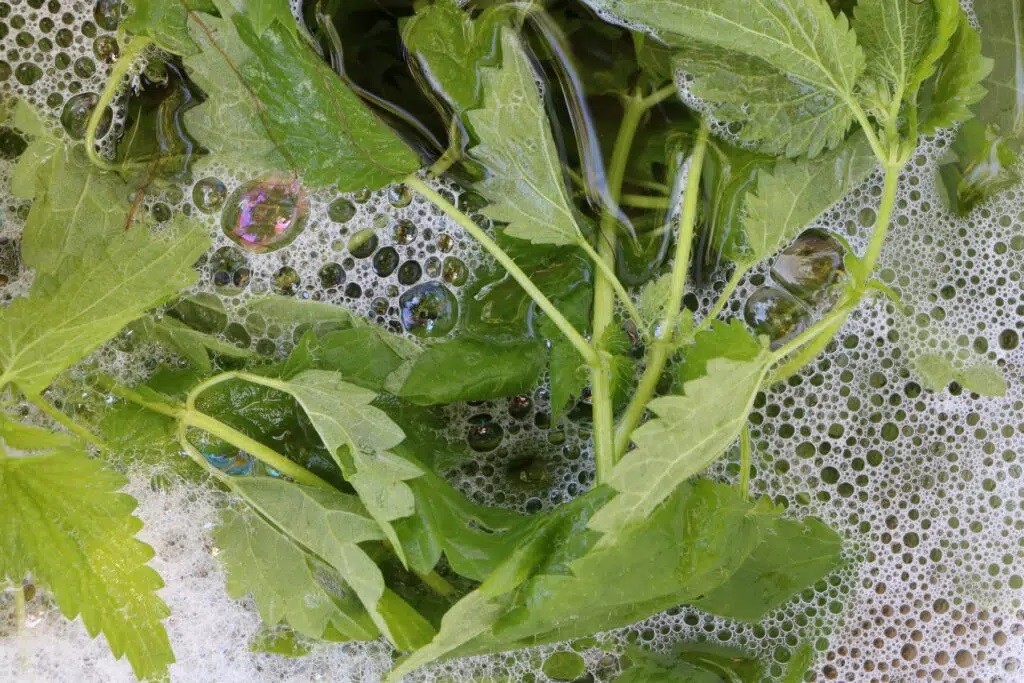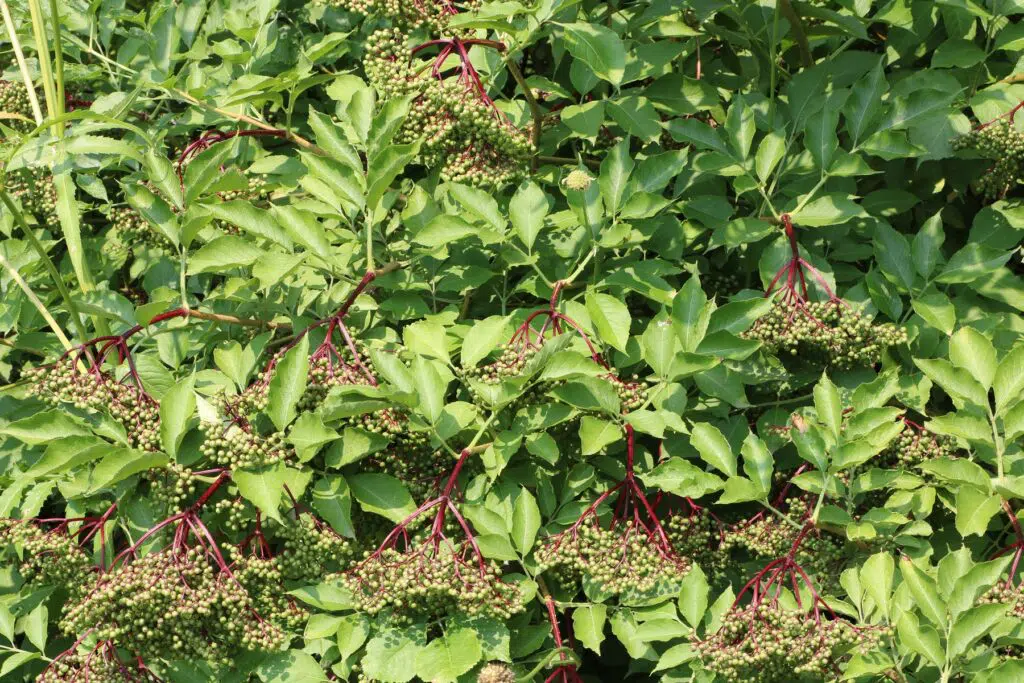Aphids on elderberry can not only spoil the harvest of flowers and fruits, a heavy infestation can significantly weaken the plants. With a few home remedies you can effectively combat the aphids.
Contents
Collecting
Collecting is possible only when the bushes are still smaller and the infestation is limited. The aphids are carefully wiped off the shoots with a glove.
Note: Collected aphids should be killed quickly, for example by crushing, to prevent spreading to other plants
Nettle extract
A nettle extract is a strong tea that brews for a long time. It’s ideal for acute infestations, such as just before flower umbels open, which you may still want to harvest.
Here’s how to make the extract:
- Pour 1 l of boiling water over 100 g of nettles (fresh or dried).
- infuse for 24 hours
- filter
- Pour the extract into a spray bottle
- Spray lice specifically with it
Nettle liquid manure

The nettle liquid manure is an all-rounder in the garden, for example, serves to strengthen plants and is also very helpful in the use against aphids, including on elderberry.
Preparation of the liquid manure:
- Coarsely chop nettles (cleaned roots, leaves, stems, shoots, seed stalks).
- fill the container 2/3 with nettles
- fill with water
- cover
- place in partial shade
- stir occasionally
How long the slurry takes to finish depends on the ambient temperature. Once the material in the liquid is largely decomposed, you can apply the home remedy.
To do this, dilute the liquid manure with water in a ratio of 1:10 and spray it on the infested shoots. They should repeat the application several times at intervals of two to three days.
Milk
Milk has become a proven means of combating various diseases. But it also helps in the fight against aphids.
Preferably use raw milk. If you have only skim milk or commercial whole milk, adjust the dilution with water accordingly.
The following mixtures are possible:
- Raw milk: ratio 1:1
- skim milk: 2:1
- Low-fat milk: 5:1
The lower the fat content in the milk, the less water you use to dilute it. You can also add a few drops of canola oil or essential oils such as lavender to the mixture.
Pruning
Pruning is recommended when other methods of controlling aphids on elderberry have failed or the tree is too large, making sustained control impossible.
Elderberry is very tolerant of pruning and can be cut back even in summer. Cut shoots should be disposed of immediately in the residual waste, so that the insects do not infest other plants.
Note: Pruning is recommended in case of heavy infestation. The leaves and shoots will then only grow stunted and, in addition, the formation of diseases in the weakened plants will be favored.
Soapy water
The application of a soap suds is recommended in case of a more severe infestation. Aphids, in fact, secrete a sticky secretion that gums up the openings on the leaves and also favors the infection of diseases.
Make soap suds:
- Grate 20 g of curd soap
- Dissolve soap in 1 l hot water
- let the lye cool down
- fill into a spray bottle
- Spray insects with it
Tip: To increase the effect, you can add a few drops of neem oil or rapeseed oil. The oil gums up the aphids’ breathing holes, causing them to die.
Water
Using a sharp jet of water to treat an aphid infestation is a proven home remedy when the elderberry has grown several feet tall.
To do this, aim a jet of water at the infested shoots, washing away the insects. Since this does not kill them, but they get stuck in other areas or land on the ground, you need to repeat this several times.
Water pressure can be high, as this makes it easier to remove the aphids. The leaves and shoots of elderberry can easily withstand this.
Tip: Do not only proceed against the aphids from above or from the side. Also direct the water jet from the bottom up against the infested shoots, which usually catches more insects
Prevent infestation
To prevent aphids on elderberry in the first place, choose the appropriate location. This will make the bush less attractive to pests.
The site should have the following characteristics:
- sunny
- airy
- warm
You can also orient yourself here to natural sites, which include, for example, south-facing forest edges. They meet all the requirements, as a result of which the plants there not only grow very well, but also remain largely free of pests.
It will not hurt if you occasionally thin out the elder. This will also make it more airy and insects will not feel as comfortable.
Aphids are also often cared for by ants. If you notice ants associated with aphids on your elderberry, try to find the ant nest first before controlling the aphids. Relocate the nest, which will make it easier to get rid of the sucking insects in the long run.
Frequently asked questions
What aphids infest elderberry?
There are several aphid species that can infest elderberry shrubs. First and foremost among them is the elderberry aphid (Aphis sambuci), which specialize on these plants. In addition, the green peach aphid (Myzus persicae) and the black bean aphid (Aphis fabae) can also be found on the shoots. To prevent transmission of these two species, neither legumes nor peach trees should be located nearby.
Can aphids fly?
Whether an aphid can fly depends on many factors. There are species that are completely incapable of flight. In some species, wings are formed only when there is a need, such as when new food sources must be sought due to a shortage of food. This is the case, for example, with the elderberry aphid, where some specimens can develop wings. In some species, on the other hand, such as the peach aphid, only the summer generation develops wings.


